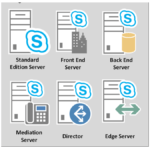As technology continues to advance, it seems like we are getting closer and closer to the sci-fi future that we’ve all dreamed of. One of the latest advancements in this field is the Meta Llama, a large language model created by Facebook’s founder Mark Zuckerberg. In this article, we’ll take a closer look at what the Meta Llama is, how it works, and what it means for the future of artificial intelligence.

What is the Meta Llama?
The Meta Llama is a large language model, which means that it has been trained on an enormous amount of data in order to be able to understand and process human language. What makes the Meta Llama different from other language models is that it is capable of processing not only text but also audio and video data. This means that it has the ability to understand human speech and even recognize faces and objects.
How Does it Work?
The Meta Llama works by using a technique called unsupervised learning. This means that it has been trained on a massive amount of data without any explicit input or guidance from humans. Instead, it uses complex algorithms to identify patterns and make connections between different pieces of information.
One of the key advantages of this approach is that the Meta Llama is able to learn and adapt on its own, without the need for constant human input. This means that it has the potential to become much more intelligent and versatile than other language models that rely on manual input.
What are the Implications of the Meta Llama?
The Meta Llama has enormous potential for a wide range of applications. For example, it could be used to improve voice assistants such as Siri or Alexa, making them more natural and intuitive to use. It could also be used to create more sophisticated chatbots and virtual assistants, as well as improving the accuracy of machine translation and speech recognition.
Another potential application of the Meta Llama is in the field of education. By using natural language processing to understand and respond to student queries, it could help to create more personalized and effective learning experiences. It could also be used to improve accessibility for people with disabilities, by providing more intuitive interfaces and voice-controlled devices.
Conclusion
The Meta Llama is a groundbreaking development in the field of artificial intelligence, with the potential to revolutionize the way we interact with technology. Its ability to understand and process human language in multiple modalities opens up a wide range of new possibilities, from improving voice assistants to creating more effective educational tools.
As we move forward into the future, it will be interesting to see how the Meta Llama develops and what new applications it will be used for. One thing is for sure: this is a technology that is going to change the world in ways that we can’t even imagine yet.
How is the Meta Llama different from other language models?
The Meta Llama is different from other language models because it is capable of processing not only text but also audio and video data. This means that it has the ability to understand human speech and even recognize faces and objects.
What is unsupervised learning and how does it relate to the Meta Llama?
Unsupervised learning is a machine learning technique where the model is trained on a massive amount of data without any explicit input or guidance from humans. The Meta Llama uses this approach to identify patterns and make connections between different pieces of information, allowing it to learn and adapt on its own.
What are some potential applications of the Meta Llama?
The Meta Llama has enormous potential for a wide range of applications, including improving voice assistants, creating more sophisticated chatbots and virtual assistants, improving the accuracy of machine translation and speech recognition, and creating more personalized and effective learning experiences.
How can the Meta Llama be used to improve accessibility for people with disabilities?
The Meta Llama can be used to improve accessibility for people with disabilities by providing more intuitive interfaces and voice-controlled devices. For example, it could be used to create voice-activated wheelchairs or other assistive technologies that are more natural and easy to use.
What are some potential challenges or drawbacks of the Meta Llama?
One potential challenge with the Meta Llama is ensuring that it is trained on a diverse and representative set of data, in order to avoid bias or discrimination. Another challenge is ensuring that it is used ethically and responsibly, and that its capabilities are not misused or abused in any way. Finally, there may be concerns around privacy and security, as the Meta Llama is capable of processing large amounts of personal data.


